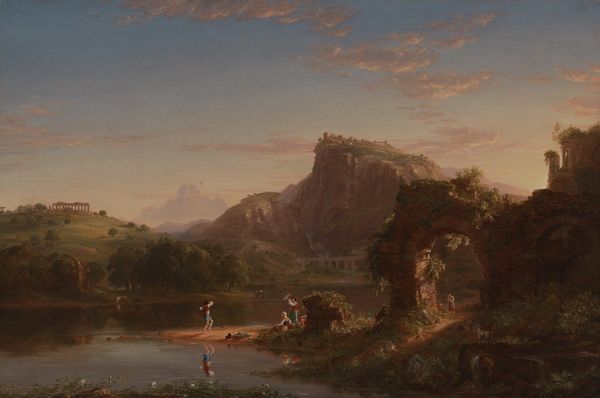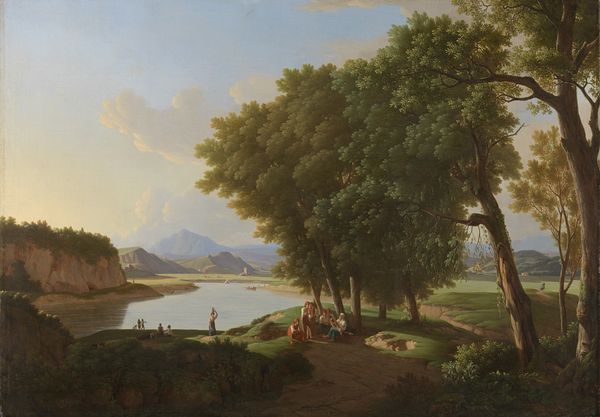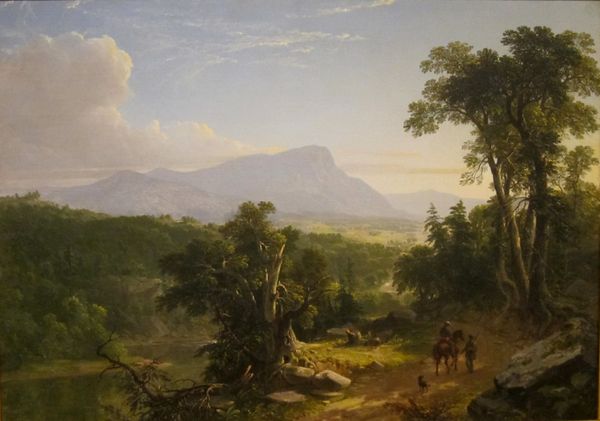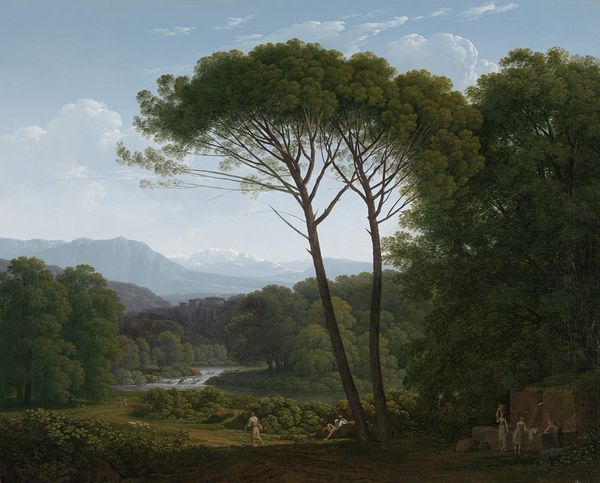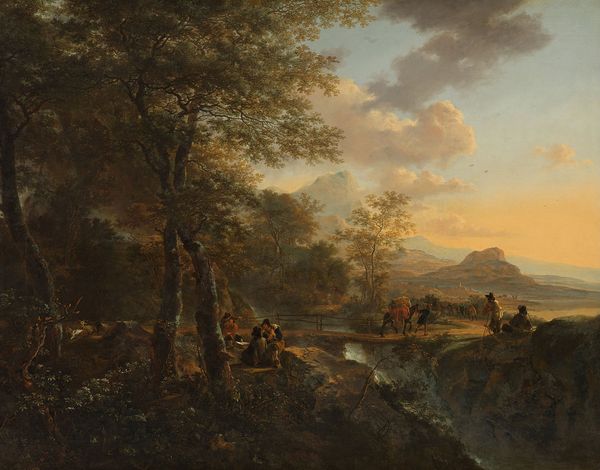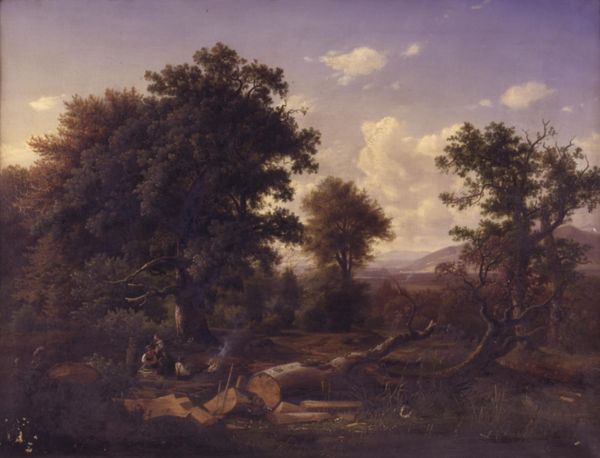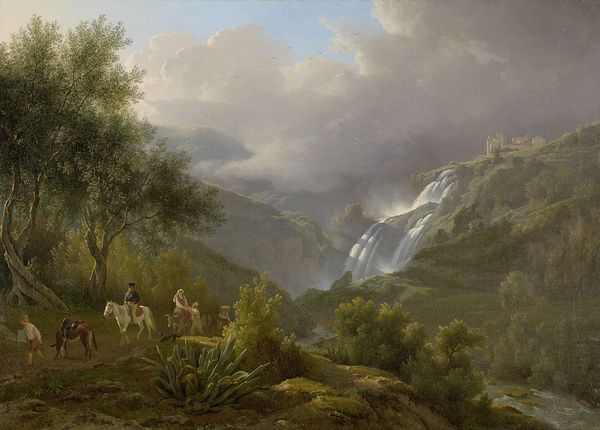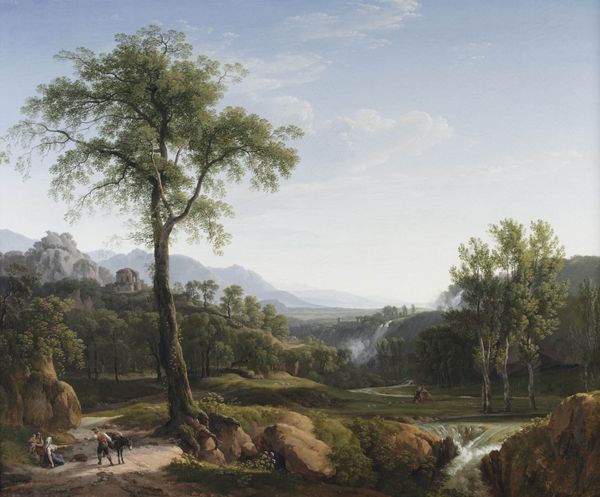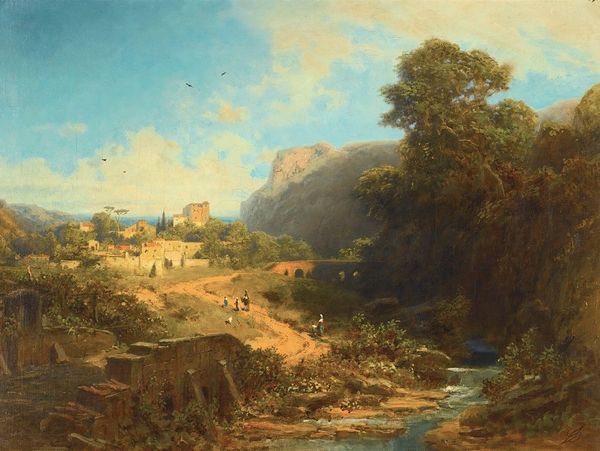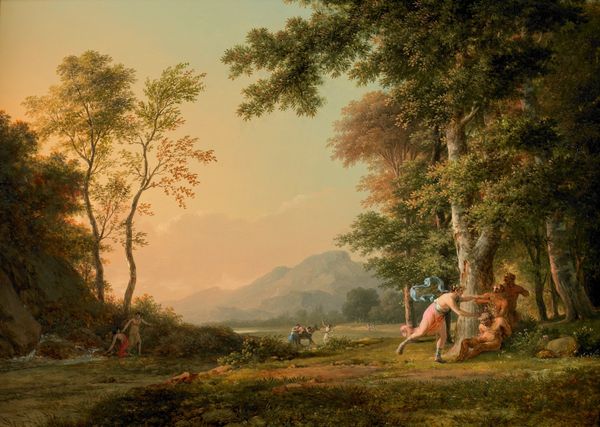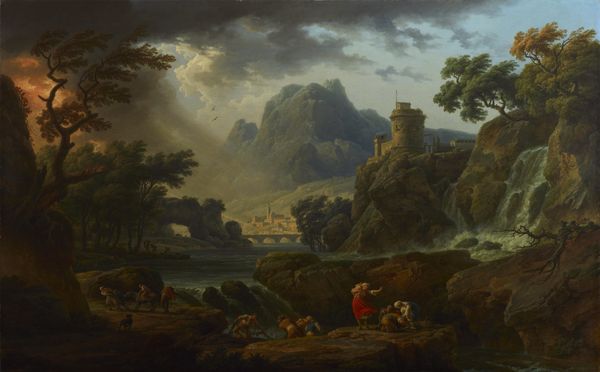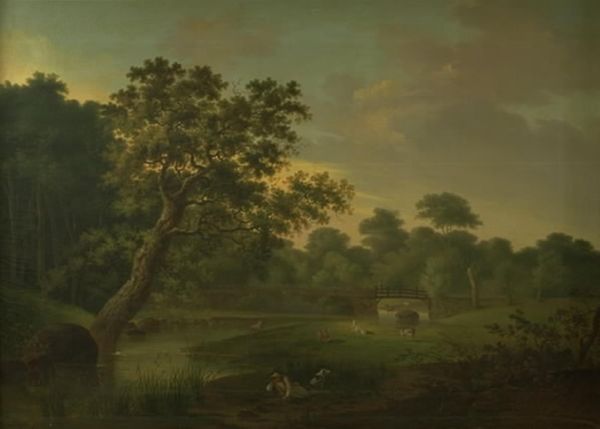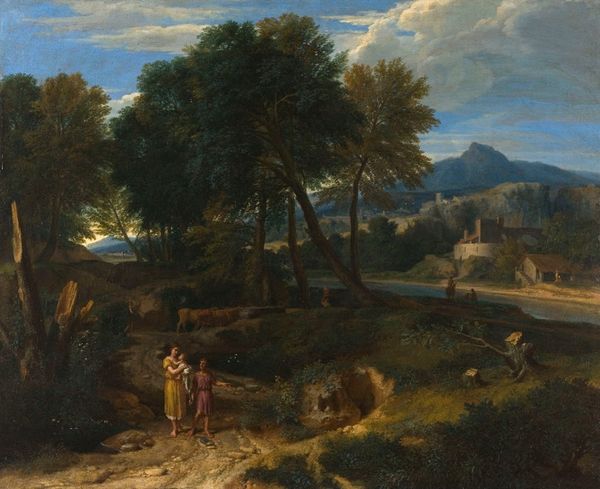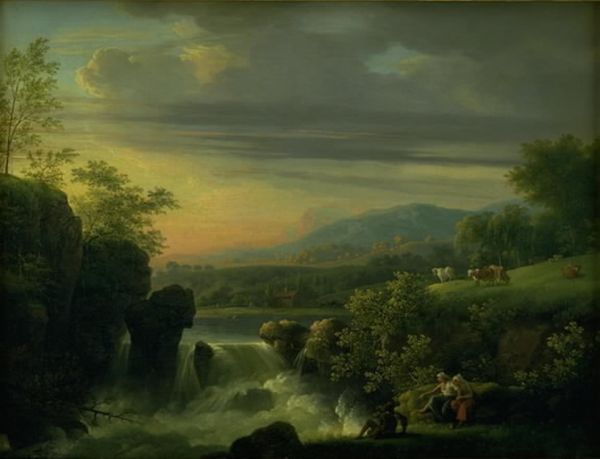
painting, plein-air, oil-paint
#
tree
#
neoclacissism
#
sky
#
rural-area
#
painting
#
plein-air
#
oil-paint
#
landscape
#
classical-realism
#
figuration
#
oil painting
#
geometric
#
cityscape
Copyright: Public domain
Editor: So here we have "A Capriccio of Rome with the Finish of a Marathon," painted by Pierre-Henri de Valenciennes in 1788. It's an oil on canvas, and right away, the composition strikes me. There’s this idyllic, almost dreamlike vision of a classical landscape, yet with this distinct atmosphere… What do you see in this piece? Curator: Well, consider the painting's title. The “capriccio” itself is a crucial clue. It was a popular genre, especially in the 18th century, allowing artists to blend real and imagined elements. Valenciennes isn't just depicting Rome, but constructing an idealized vision shaped by the prevailing Neoclassical ideals. Notice how carefully he places ruins, architecture, and even the figures to evoke a sense of history and civic virtue. How might the marathon relate to this theme? Editor: The marathon suggests a return to ancient Greek ideals, fitness, and civic pride, I guess. Is Valenciennes critiquing or celebrating something here? Curator: Perhaps both. Neoclassicism itself was tied to political and social reform. While celebrating classical virtues, it could also critique contemporary society. Think about the role of the Academy in shaping artistic tastes and values during this period. Do you believe there are parallels to this form of power in contemporary institutions today? Editor: Hmm, interesting. I see your point. So, he is offering not just a picture of the past, but really a statement on how it should influence the present… even the future! I hadn't thought about it in this depth before. Curator: Precisely. And the 'finish' in the title could speak to an aspiration. Art, in its public role, should guide a civilization forward, carrying values through the ages. The ruins can speak of not just where we’ve come from but where we’re going. Editor: It is now more clear why this painting remains relevant beyond just its aesthetic appeal. Thanks for providing so much insight! Curator: It's wonderful to examine the lasting power art can have and to consider the institutions through which art endures to guide current dialogue.
Comments
No comments
Be the first to comment and join the conversation on the ultimate creative platform.
